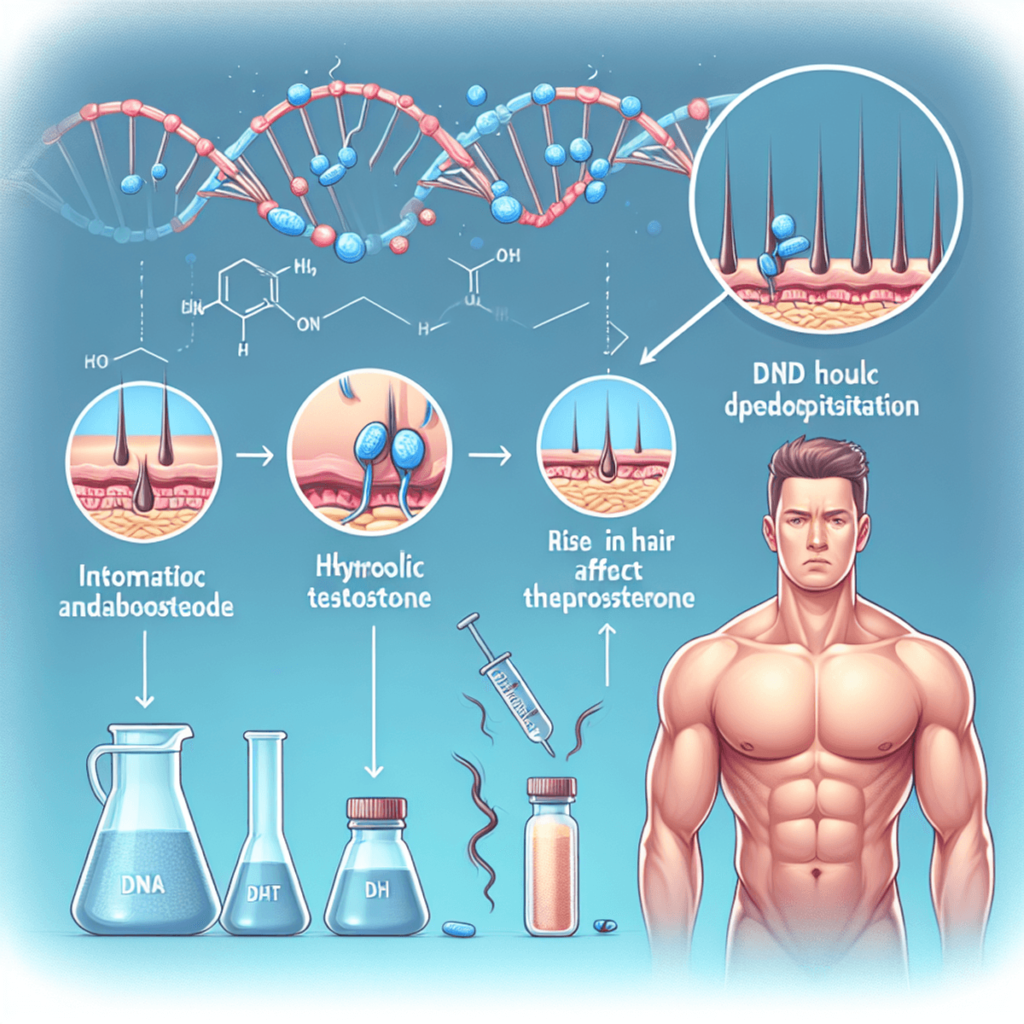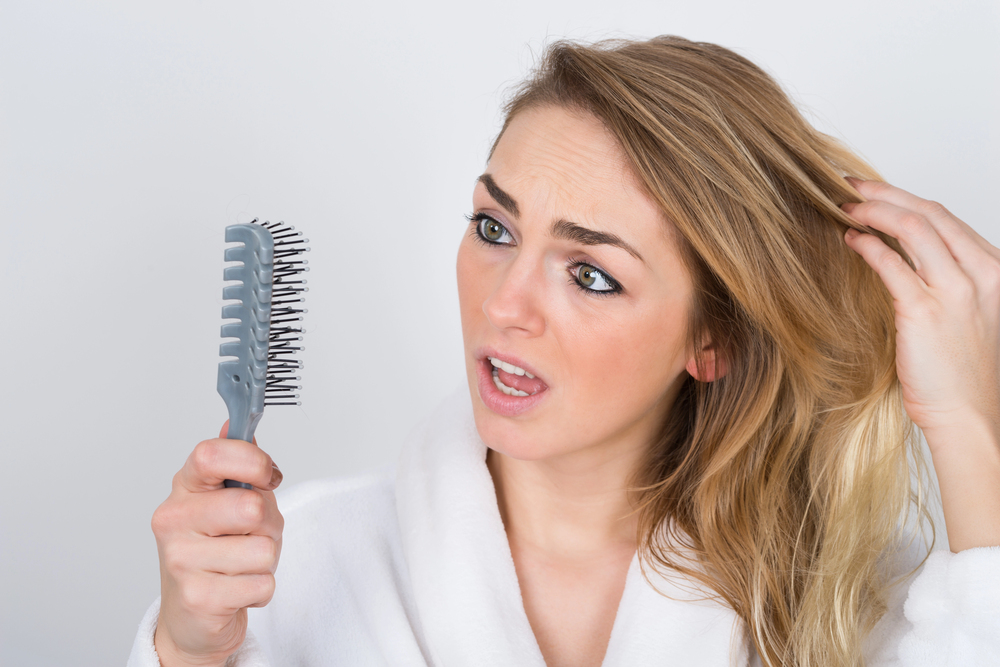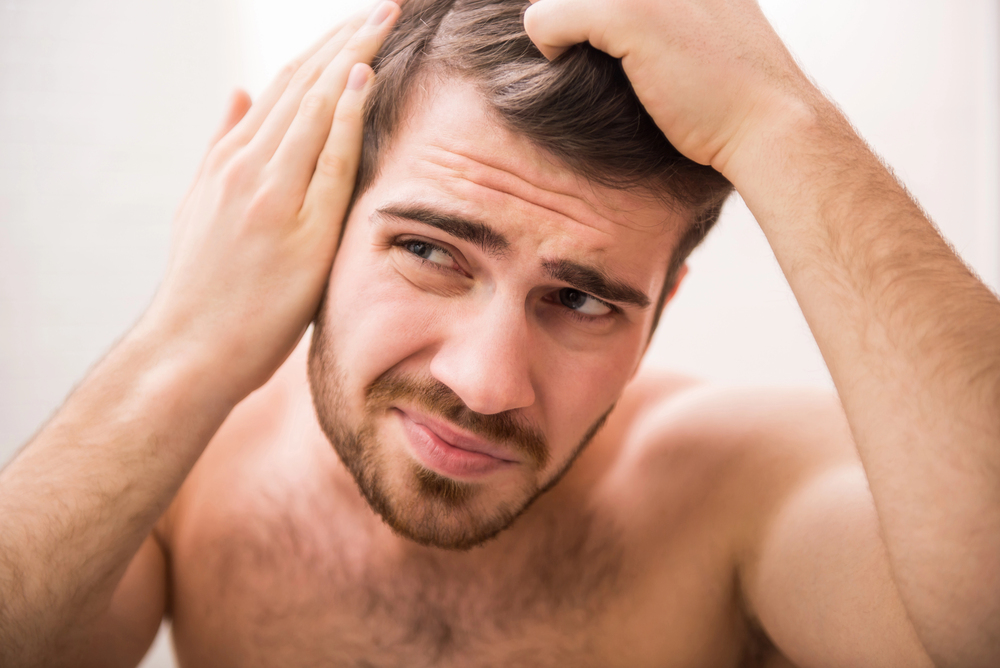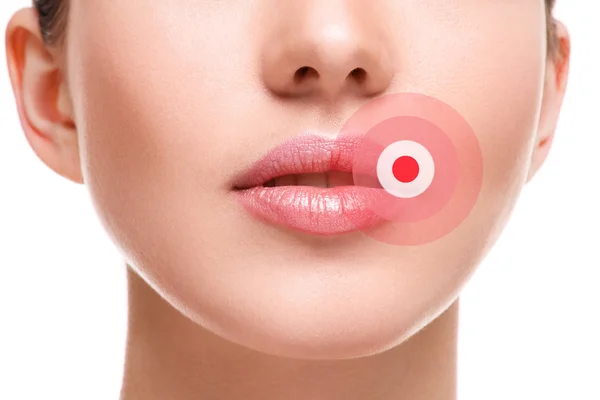
Introduction
Many people who are considering using steroids are worried about whether these substances will cause hair loss. It’s important to understand the connection between steroids and hair loss, especially for those who want to maintain healthy hair.
Steroids, especially anabolic ones, have been known to cause hair loss. This happens because steroids affect hormone levels in the body. When hormones like dihydrotestosterone (DHT) increase due to steroid use, they can harm hair follicles and result in thinning or shedding of hair. However, not everyone who takes steroids will experience hair loss; individuals with a genetic predisposition are more likely to be affected.
Genetics play a significant role in determining how someone responds to steroids in terms of hair loss. If there is a family history of male pattern baldness, it is possible that using steroids may speed up the process of hair loss for that individual. Being aware of this susceptibility can empower users to make better choices regarding their health and appearance.
To fully understand how steroids impact hair health, it is crucial to consider both the physical effects on the body as well as any underlying genetic factors involved. By being mindful of these aspects, individuals can develop effective strategies for managing and preventing potential issues related to steroid-induced hair loss.
Understanding Steroids
Anabolic Steroids: Definition and Uses
Anabolic steroids, such as Anadrol and Anavar, are synthetic substances that mimic the effects of the male hormone testosterone. These compounds are primarily used to enhance muscle mass, improve athletic performance, and aid in recovery from intense physical activities. The allure of increased strength and endurance makes anabolic steroids popular among athletes and bodybuilders. However, their use is not without risks, particularly when it comes to hair health.
Corticosteroids: Definition and Uses
Corticosteroids, including prednisolone, differ significantly from anabolic steroids. These medications are typically prescribed to reduce inflammation and treat a variety of conditions such as allergies, asthma, and autoimmune disorders. While effective in managing these ailments, corticosteroids can also have side effects related to hair health.
Comparing Potential for Hair Loss
- Anabolic Steroids often lead to significant hormonal fluctuations in the body. By increasing levels of testosterone, they can also raise levels of Dihydrotestosterone (DHT), a potent hormone linked to hair follicle damage.
- Corticosteroids, on the other hand, may contribute to hair thinning over time due to their systemic effects on the body. Despite this potential for hair loss, corticosteroid-induced thinning is generally reversible upon discontinuation of the medication.

Hormonal Changes and Hair Loss
Steroids elevate hormone levels within the body. This increase is particularly notable with DHT in individuals using anabolic steroids. DHT is known for its detrimental impact on hair follicles, leading to miniaturization and eventual hair loss. This process is especially concerning for those genetically predisposed to conditions like male pattern baldness.
The connection between hormonal changes induced by steroid use and hair loss becomes clear when examining how elevated DHT levels accelerate follicular damage. Individuals with a genetic susceptibility may find that even moderate steroid use exacerbates existing tendencies toward balding.
Understanding these mechanisms highlights why some people experience substantial hair loss while others remain unaffected despite similar usage patterns. The interplay between genetics and hormonal shifts underscores the complexity of predicting individual responses to steroid use.
While both types of steroids have distinct mechanisms and uses, they share common ground in their potential impact on hair health through hormonal alterations. Recognizing these differences aids in making informed decisions about steroid use concerning personal well-being and aesthetic considerations.
It’s important to note that while steroid usage can lead to hair loss due to hormonal changes, other factors such as improper hair care routines or certain products like conditioners can also contribute to this issue. Understanding these various aspects can help individuals better manage their hair health amidst the challenges posed by steroid use or other external factors.
Genetic Factors in Steroid-Induced Hair Loss
Male pattern baldness is a common condition that affects a large number of people, and its onset can be sped up by the use of steroids. This type of hair loss, medically known as androgenetic alopecia, is mainly caused by genetic factors. People with a genetic tendency for hair loss are especially susceptible when exposed to higher levels of hormones like dihydrotestosterone (DHT), which are increased through steroid use.

1. Male Pattern Baldness
Characterized by a receding hairline and thinning crown, male pattern baldness is linked to hereditary factors. The presence of certain genes can make hair follicles more sensitive to DHT, leading to follicle shrinkage and eventual hair loss.
2. Genetic Predisposition
Not everyone who uses steroids will experience hair loss; genetics play a crucial role. If there’s a family history of androgenetic alopecia, the likelihood of experiencing steroid-induced hair loss increases significantly.
3. Steroids and Genetic Susceptibility
Steroids raise hormone levels in the body, intensifying the effects on those genetically inclined towards hair thinning. The upsurge in DHT due to anabolic steroid use can hasten the progression of male pattern baldness.
Understanding these genetic factors helps individuals evaluate their risk levels when considering steroid use. Those aware of a family history of baldness might approach steroids with caution or seek alternatives that pose less risk to their hair health. Engaging with healthcare professionals for personalized advice can further aid in managing this potential side effect effectively.
Individual Variability in Response to Steroids
The effects of steroids on hair can vary significantly between individuals. One key reason is that not everyone who uses steroids will experience hair loss. This variability stems from several factors that influence how different people respond to steroid use.
Factors Influencing Individual Responses
- Dosage: The amount of steroid consumed plays a pivotal role in determining its impact on hair health. Higher dosages are more likely to elevate hormone levels, thus increasing the risk of hair follicle damage and potential hair loss.
- Duration of Use: Prolonged use of steroids can lead to cumulative hormonal changes, which may exacerbate hair loss over time. Short-term use might not produce noticeable effects, whereas extended exposure could heighten the likelihood of experiencing adverse outcomes.
- Personal Genetics: Genetics is a critical determinant in whether steroids will cause hair loss for an individual. Those genetically predisposed to conditions like male pattern baldness have a higher susceptibility to steroid-induced hair loss. This genetic predisposition means that even minimal exposure to elevated hormone levels, such as increased dihydrotestosterone (DHT), can trigger or accelerate the balding process.
Understanding these factors helps explain why two individuals with similar steroid usage patterns might experience vastly different outcomes regarding hair loss. While some might notice significant thinning or balding, others may see little to no change in their hair health.
This insight into individual variability underscores the importance of personalized approaches when considering the use of steroids, especially for those concerned about potential effects on their hair. Tailoring steroid regimens according to one’s genetic makeup and other influencing factors can potentially mitigate unwanted side effects like hair loss, providing a more balanced path toward achieving desired results without compromising hair health.
Anabolic Steroids Known for Causing Hair Loss
Anabolic steroids have long been associated with hair loss, particularly in individuals who are genetically predisposed to male pattern baldness. This effect is primarily due to the increase in dihydrotestosterone (DHT) levels, a hormone that plays a significant role in hair follicle damage. Below is an examination of specific anabolic steroids notorious for their potential to accelerate baldness:
1. Anadrol (Oxymetholone)
Anadrol is known for its potent effects on muscle growth but also significantly increases DHT levels. This spike in DHT can lead to rapid hair loss, especially in those already prone to androgenetic alopecia.
2. Anavar (Oxandrolone)
While Anavar is often considered milder compared to other anabolic steroids, it still elevates DHT levels. Users seeking minimal side effects should be aware that even Anavar can contribute to thinning hair over time.
3. Dianabol (Methandrostenolone)
As one of the most popular anabolic steroids, Dianabol enhances performance by boosting testosterone, which subsequently raises DHT levels. The increased presence of DHT enhances the risk of hair follicle miniaturization and baldness.
4. Masteron (Drostanolone Propionate)
Masteron is frequently used for its aesthetic benefits in bodybuilding; however, it has a high affinity for converting testosterone into DHT. This conversion process makes Masteron a considerable risk factor for those concerned about hair loss.
5. Primobolan (Methenolone Acetate)
Although Primobolan is often regarded as a relatively safe steroid with fewer side effects, its influence on DHT cannot be ignored. It can still trigger hair thinning in individuals with genetic susceptibility.
6. Proviron (Mesterolone)
Proviron functions mainly as an anti-estrogenic compound but also significantly boosts DHT levels. This increase can lead to accelerated shedding and balding in users sensitive to hormonal changes.
7. Trenbolone
Trenbolone is one of the most potent anabolic steroids available and dramatically raises DHT levels. Its impact on hair loss is profound and often irreversible if used extensively without precautionary measures.
8. Winstrol (Stanozolol)
Known for its ability to enhance strength without adding bulk, Winstrol contributes to higher DHT concentrations. Users often report pronounced hair loss as a common side effect during cycles involving Winstrol.
The relationship between these anabolic steroids and hair loss underscores the importance of understanding individual susceptibility factors such as genetic predisposition or pre-existing conditions like male pattern baldness. Each steroid’s interaction with DHT highlights why some users experience more significant hair loss than others, urging caution and informed decision-making before use.
Corticosteroids: A Different Story for Hair Thinning
Corticosteroids, such as prednisolone, are another class of steroids with their own set of implications for hair health. Unlike anabolic steroids, corticosteroids are primarily used to treat a range of medical conditions, including allergies and skin disorders. While their therapeutic benefits are undeniable, long-term use can lead to various side effects, one of which is hair thinning.
Potential Side Effects
- Hair Thinning Over Time: Prolonged usage of corticosteroids can result in noticeable hair thinning. This is largely due to the way these medications influence hormone levels in the body, potentially weakening hair follicles over time.
- Other Effects: Users may also experience changes in skin texture and distribution of body fat, which are common side effects associated with extended corticosteroid use.
Reversibility of Hair Loss
A crucial aspect when discussing corticosteroids is the reversibility of hair loss:
- Reversibility Compared to Anabolic Steroids: Unlike anabolic steroids where hair loss might become permanent due to increased DHT levels and genetic predispositions, hair thinning induced by corticosteroids often shows signs of reversal once the medication is discontinued. The body’s hormone levels gradually return to baseline, allowing for potential regrowth.
- Conditions for Reversal: The extent to which hair growth can be restored depends on individual factors including the duration of steroid use and personal health conditions. Early detection and intervention can significantly improve outcomes.
Understanding these nuances is key when considering options for corticosteroids hair loss treatment. Consulting healthcare providers is essential before adjusting or discontinuing any medication. They can provide guidance on alternative therapies or adjustments that minimize side effects while maintaining treatment efficacy.
Effects on Women: Unique Considerations with Anabolic Steroids
When it comes to anabolic steroid use, women face distinct challenges that differ significantly from their male counterparts. The powerful substances, often derivatives of testosterone, can lead to pronounced side effects in female users.
Impact on Hair
1. Scalp Hair Loss in Women
One of the most notable effects is scalp hair loss. While men may experience accelerated patterns of baldness, women might see a noticeable thinning of the scalp hair. This is particularly concerning due to the cultural and personal value placed on hair as a symbol of femininity.
2. Excessive Body Hair Growth
Alongside scalp hair thinning, women using anabolic steroids may also experience excessive body hair growth, a paradoxical effect resulting from the increased levels of male hormones influencing hair growth patterns across different areas of the body.
Irreversible Effects
Prolonged exposure to anabolic steroids can lead to irreversible changes known as virilization symptoms. These include:
- Deepened Voice
- Increased Muscle Mass
- Changes in Skin Texture
These changes are not just cosmetic; they signify profound hormonal shifts that can alter a woman’s physiology permanently. The decision to use anabolic steroids should be carefully considered, weighing these potential irreversible effects.
Consideration for Female Users
Female athletes or bodybuilders considering anabolic steroids must take extra caution due to these significant risks. Consulting healthcare professionals before starting any steroid regimen is crucial. They can provide guidance on minimizing side effects and discuss alternative approaches that align better with health goals without compromising feminine characteristics.
Understanding these unique considerations helps in making informed choices about steroid use, ensuring that personal health and well-being remain a priority amidst athletic aspirations or aesthetic desires.
Preventive Measures Against Hair Loss from Steroid Use
Engaging with steroids can present several challenges, especially concerning hair loss. For individuals considering steroid use, preventing hair loss from steroids involves careful planning and informed decision-making. Consulting healthcare providers is a crucial first step before beginning any steroid regimen. These professionals can offer valuable insights into safe practices, dosage adjustments, and monitoring strategies that could significantly mitigate risks.
Importance of Consulting Healthcare Providers
Healthcare providers play a vital role in helping individuals navigate the potential risks associated with steroid use, including hair loss. Their expertise allows for tailored approaches that consider personal health factors and genetic predispositions.
Personalized Advice
Healthcare providers can tailor recommendations based on individual health profiles and genetic predispositions.
Risk Assessment
They are equipped to evaluate the potential side effects of steroids, including the likelihood of hair loss.
Monitoring Strategies
Regular check-ups facilitate early detection and management of any adverse effects, ensuring that interventions can be timely implemented.
Dosage Adjustments and Monitoring
Effective management often requires adjusting dosages to balance benefits against potential side effects. Lower doses may still achieve desired outcomes while minimizing risks such as hair loss. Continuous monitoring is essential, allowing for real-time adjustments based on how your body responds.
Maintaining a Healthy Scalp Environment
While undergoing steroid treatments, maintaining a healthy scalp environment can play a pivotal role in reducing hair loss risks:
- Proper Nutrition: A balanced diet rich in vitamins and minerals, particularly those known to support hair health like biotin, zinc, and iron.
- Protein Intake: Proteins are the building blocks of hair; ensure adequate intake to support growth.
- Stress Management: Stress is a known exacerbator of hair loss. Incorporating stress-reducing activities such as yoga or meditation can help maintain hormonal balance.
- Sleep Quality: Ensure sufficient rest as poor sleep can affect stress levels and overall health.
- Scalp Care: Regular washing with mild shampoos can keep the scalp clean and reduce potential build-up that might impact follicle health.
- Massaging Techniques: Gentle scalp massages improve blood circulation, which may help in maintaining hair strength.
Lifestyle Adjustments
Adopting specific lifestyle changes can also contribute to preserving hair health during steroid use:
- Hydration: Adequate water intake supports overall bodily functions, including maintaining skin and scalp health.
- Avoiding Harmful Hair Practices: Limiting the use of heat styling tools and harsh chemicals helps protect hair integrity.
Taking these preventive measures seriously not only aids in minimizing the risk of steroid-induced hair loss but also promotes overall well-being. By engaging with healthcare experts and adopting supportive practices, you create a proactive approach towards managing the potential side effects associated with steroid use.
Treatment Options Available for Those Experiencing Steroid-Induced Hair Loss
Steroid-induced hair loss can be distressing, but there are treatment options available that target the underlying mechanisms of this condition. Medications like finasteride and minoxidil are commonly prescribed to help combat this specific form of alopecia.
Finasteride
Mechanism: Finasteride works by inhibiting the conversion of testosterone to dihydrotestosterone (DHT), a hormone linked to hair follicle damage and miniaturization, particularly in individuals with a genetic predisposition. By reducing DHT levels, finasteride helps slow down hair loss and may even promote regrowth in some cases.
Usage: Typically administered orally, finasteride is often taken daily at a dosage determined by a healthcare provider. Consistent use is crucial for effectiveness, as discontinuation may lead to the resumption of hair loss.
Considerations: It’s important to note that finasteride is primarily approved for use in men and can have side effects, including sexual dysfunction and potential risks for women of childbearing age.
Minoxidil
Mechanism: Minoxidil acts by increasing blood flow to hair follicles, thereby stimulating growth and prolonging the anagen (growth) phase of the hair cycle. This topical treatment enhances follicular size and thickness over time.
Usage: Available over-the-counter in liquid or foam form, minoxidil is applied directly to the scalp twice a day. Regular application is necessary to maintain results, with noticeable improvements typically occurring after several months of consistent use.
Considerations: While minoxidil can be used by both men and women, it may cause scalp irritation or unwanted facial hair growth in some users. Unlike finasteride, it does not target DHT but complements other treatments targeting hormonal causes.
These medications provide viable pathways for managing steroid-induced hair loss. Consulting with healthcare professionals ensures appropriate usage and maximizes potential benefits while minimizing risks.
Surgical Solutions: When All Else Fails
For those grappling with hair loss due to steroid use, surgical solutions can offer a viable option when other treatments fall short. FUE Hair Transplants (Follicular Unit Extraction) are one of the most popular methods. This technique involves removing individual hair follicles from a donor site, typically the back of the head, and transplanting them to areas experiencing hair loss. The precision of FUE makes it less invasive compared to older methods, resulting in minimal scarring and reduced downtime.
In addition to traditional scalp hair transplants, individuals may also consider beard transplants and eyebrow transplants. These procedures follow similar principles as FUE, focusing on restoring density and natural appearance in facial areas affected by thinning or baldness due to steroids.
Considerations for Surgical Options:
- Invasiveness: While modern techniques like FUE are less invasive, they still involve surgical intervention. Understanding the potential risks and benefits is crucial before proceeding.
- Downtime: Recovery time varies depending on the procedure’s extent and individual healing rates. Typically, patients can return to normal activities within a week but must avoid strenuous exercise for a few weeks.
- Cost: Hair restoration surgeries can be expensive, often requiring multiple sessions for optimal results. Evaluating financial commitments beforehand is essential.
- Scarring: Although FUE minimizes visible scarring, some degree of scarring is inevitable. It is crucial to discuss expectations with a qualified surgeon.
While these surgical options provide promising results for many dealing with hair loss from steroid abuse, they require careful consideration and consultation with experienced professionals specializing in hair restoration.
Seeking Professional Help: Consulting Experts in Hair Restoration
Addressing hair loss due to steroid use can be complex, requiring the expertise of professionals. Trichologists specialize in diagnosing and treating hair and scalp conditions, making them highly valuable for individuals dealing with steroid-induced hair loss. Consulting reputable clinics experienced in handling cases related to substance misuse can provide tailored solutions and professional guidance.
For those seeking expert advice, renowned specialists such as Dr. Konior and Dr. Mir Malkani are well-known for their work in hair restoration. Clinics like the Wimpole Clinic offer comprehensive assessments and treatment plans designed to address the unique challenges posed by steroid-related hair loss.
Choosing a clinic or professional with a proven track record ensures access to the latest technology and methods in hair restoration. These experts can offer insights into the best course of action, whether it involves medication, lifestyle changes, or advanced surgical procedures. By leveraging their knowledge, you can make informed decisions about your hair health and work towards effective recovery from steroid-induced damage.
Seeking help from professionals not only provides technical expertise but also emotional support, helping you regain confidence in your appearance and overall well-being.
Conclusion
Understanding the relationship between steroids and hair loss is crucial for anyone considering their use. Steroids, both anabolic and corticosteroids, have complex effects that extend beyond immediate physical performance enhancements. The potential for hair loss should be a significant factor in your decision-making process.
Key considerations:
- Genetic Predisposition: Those with a genetic tendency towards baldness may find that steroid use accelerates hair loss.
- Type of Steroid: Anabolic steroids are more likely to cause hair loss due to increased DHT levels, while corticosteroids might lead to hair thinning, albeit often reversible.
- Dosage and Duration: The extent of side effects can depend heavily on how much and how long steroids are used.
It’s not just about physical appearance. Hair loss can deeply affect mental health and self-image, leading to psychological stress. Engaging with healthcare professionals before starting any steroid regimen can help mitigate risks. They offer valuable insights into maintaining hair health alongside steroid use.
Choosing to use steroids requires weighing the benefits against potential long-term impacts on well-being. This informed decision-making process ensures you are prepared for all outcomes associated with steroid use, including the possibility of hair loss.
FAQs (Frequently Asked Questions)
Do steroids cause hair loss?
Yes, steroids can cause hair loss, particularly anabolic steroids that increase levels of dihydrotestosterone (DHT), a hormone linked to hair follicle damage. However, not everyone who uses steroids will experience hair loss due to individual variability.
What are the differences between anabolic and corticosteroids regarding hair loss?
Anabolic steroids, such as Anadrol and Anavar, are more likely to cause significant hair loss because they elevate DHT levels. In contrast, corticosteroids like prednisolone may lead to hair thinning over time but typically have different mechanisms of action and effects on the body.
How does genetic predisposition play a role in steroid-induced hair loss?
Genetic predisposition is a significant factor in how individuals respond to steroid use. Those with a family history of male pattern baldness may be more susceptible to experiencing hair loss when using steroids.
What specific anabolic steroids are known for causing hair loss?
Certain anabolic steroids such as Dianabol, Masteron, Trenbolone, and Winstrol are known to potentially cause significant hair loss due to their impact on DHT levels and follicle health.
What treatment options are available for those experiencing steroid-induced hair loss?
Common treatments include medications like finasteride, which inhibits DHT, and minoxidil, which promotes blood flow to the scalp. Consulting with healthcare providers is essential for personalized treatment plans.
What preventive measures can be taken against hair loss from steroid use?
Preventive measures include consulting healthcare providers before starting any steroid regimen, adjusting dosages as needed, maintaining a healthy scalp environment through proper nutrition, and managing stress effectively.

